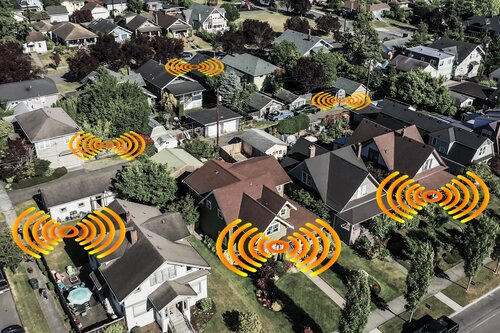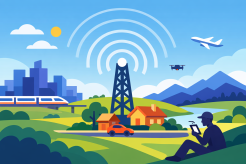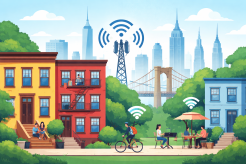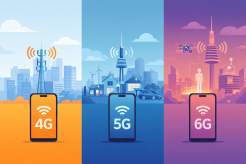What You Need to Know About Amazon Sidewalk

Amazon officially introduced Amazon Sidewalk on June 8th. It's not a device, but rather a shared network that allows certain smart home devices to connect to the internet more easily, including as Echo speakers, Ring Security cameras, outdoor lighting, motion sensors, and more.
How Amazon Sidewalk works
Amazon Sidewalk establishes a low-bandwidth network, after which authorized smart home devices in a certain community contribute a percentage of their internet bandwidth to the Amazon Sidewalk network, therefore strengthening the network. Although Amazon smart home products, such as Amazon Echo speakers and Ring cameras, will be the key contributors to the network, any smart home device that meets the Sidewalk standard can contribute to the network.
The idea is that entire communities pool their bandwidth so that all devices can access the community's fastest internet connection rather than just the device's home network. A Sidewalk community's radius would be around half a mile. Consider each smart home gadget that qualifies as a tiny mesh network. The stronger the Amazon Sidewalk network gets and the better connection all devices can have, the more devices that contribute to it.
This implies that your gadgets will still be able to connect to the internet even if your home internet connection fails. It also means that if you're too far away from your router (maybe because you moved your Echo speaker to the backyard or want to unlock your smart door from across the street), you'll be able to stay connected to the internet and utilize your smart home devices via the Sidewalk network.

How much of your bandwidth will you have to share?
Because each device only provides a maximum of 80 Kbps, it's critical that as many smart home gadgets as possible join to the Amazon Sidewalk network (0.08 Mbps). For comparison, streaming in regular definition takes 3 Mbps, while streaming in HD or 4K takes up to 25 Mbps. Amazon has also said that no account will use more than 500 MB of data per month. Most data limitations for internet plans are around 1 TB.
Can you opt out of Amazon Sidewalk?
Unless you opt out, your Amazon smart home devices will automatically participate to the Amazon Sidewalk network. You'll need to disable Amazon Sidewalk in your Alexa app.
It's simple as this:
Settings -> Account settings -> Amazon Sidewalk (use the slider to disable).
Should you be concerned about your privacy?
Many security experts are (cautiously) positive about the Amazon Sidewalk because of its excellent encryption technology. According to industry experts, there aren't many triple-protected, triple-encrypted systems on the market. However, there is no such thing as a foolproof system.
Others, on the other hand, are far more concerned. The main concern is that data will be leaked, making Sidewalk users more vulnerable to hackers.
Verdict
As a result, it's still uncertain whether using Amazon Sidewalk is any riskier than using Facebook or using public Wi-Fi. It's essentially a matter of personal preference when it comes to how much you're prepared to risk in order to stay more connected and have a better smart home experience. If you are still having doubts if Amazon Sidwalk is safe, for you and your family. You can look for other cheap and secured internet plans here:
Related Posts

Thu, Jan 1, 2026 11:49 PM
cheap internet dealsWhat Counts as Fast Mobile Internet?
Discover what truly counts as fast mobile internet, how speeds are measured, and tips to optimize your mobile connectivity for streaming, browsing, and gaming.

Thu, Jan 1, 2026 2:30 AM
cheap internet offersBest Budget-Friendly Internet Providers in New York
Finding affordable internet in New York can feel like searching for a needle in a haystack. With so many options and fluctuating prices, it’s tough to know where to start—especially if you’re a student, freelancer, small business owner, or just someone trying to stretch every dollar. But don’t worry—we’ve done the digging for you.

Tue, Dec 30, 2025 10:21 PM
SafetyIs Your Phone Watching You? Real Signs and How to Lock It Down
Learn the real signs your phone may be spying on you, why it happens, and how to protect your privacy with practical, easy steps.

Tue, Dec 30, 2025 7:42 PM
TechnologyWhat Is the Difference Between 4G, 5G, and 6G?
Compare 4G, 5G, and 6G networks in terms of speed, latency, coverage, and real-world use cases, and understand how mobile connectivity is evolving.

Mon, Dec 29, 2025 10:35 PM
cheap internet dealsLock in Your Internet Bill for 5 Years With Xfinity (Yep, Really)
Lock in your internet bill for five years with Xfinity’s new price guarantee. Explore plans, speeds, perks, and why this offer stands out.
